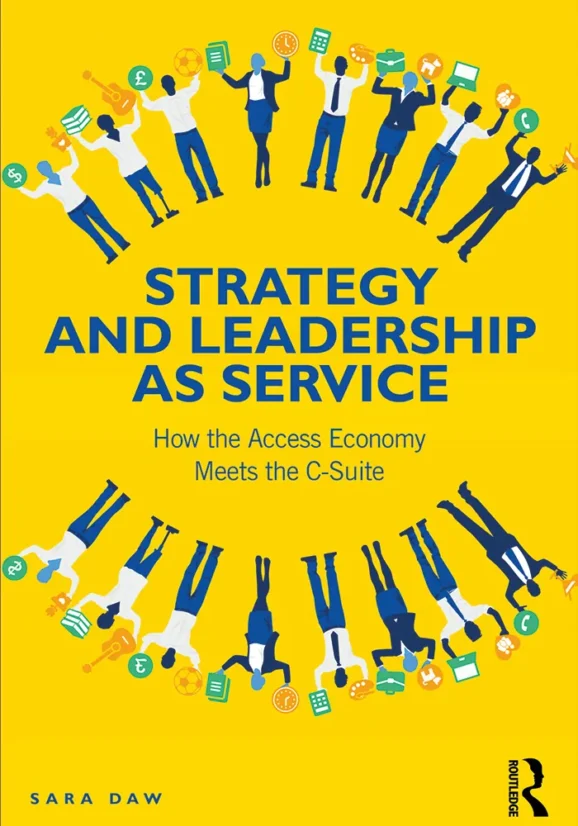Time to hire an A-team C-suite?

John E. Kaye
- Published
- Executive Leadership, Home

Pay-as-you-go top level executives can deliver cutting-edge industry expertise, without the weight of corporate ties, says business polymath Sara Daw
Many entrepreneurial and growing businesses neither need nor can afford full-time C-suite executives. For larger organisations, it is becoming harder to find the skills and knowledge required to fulfil all the obligations of a functional C-suite with a fixed group of individuals.
As the needs of our top talent changes rapidly to cope with modern workplace challenges, the traditional ways of working for the C-suite need to change. How can we achieve this?
One solution business owners are beginning to turn to is engaging with a part-time C-Suite. This new type of business model is Strategy and Leadership as Service. It’s a different way of working for businesses of all sizes, from SMEs to mid-to-large corporates. It allows business owners to tap into the talents and experience of high-calibre C-suite professionals (CXOs) on a flexible basis, rather than having to commit to a long-term employment contract.
The outcomes of this new business model can be game-changing. Business owners can gain access to the right skillsets and mindsets at the right time and in the right quantity to match the changing business agenda, more flexibility for senior leaders, and strengthened risk management.
Let’s take a look at the benefits of this new business model:
Scaling SMEs
Engaging with a part-time C-suite can be hugely beneficial for entrepreneurial and growing businesses, typically with revenues between £2m to £100m and who need skills to scale. It’s a carefully designed solution for these organisations and the C-suite talent who want to break free from corporate life, become self-employed, and build a portfolio of clients they work with for the long term on a part-time or fractional basis.
The way it works is that each CXO will have a portfolio of SME clients (usually between three and ten) each of which they work with permanently but on a flexible, fractional basis. A typical relationship might be a day a week, but it can range from a day a month up to three or four days per week depending on the complexity and size of the business. The great thing is that the fractional CXOs will build capacity into their portfolios so they can dial time up and down as needed by their clients.
This isn’t restricted to a particular CXO function either. Businesses can engage with fractional C-suite skills from the whole range of C-suite disciplines – finance, people, marketing, technology, sales, and so on. The SME gets accelerated benefit when these functions develop in tandem. For example, a fractional Chief Financial Officer (CFO) working alongside their part-time Chief Marketing Officer (CMO), Chief Information Officer (CIO), and Chief Human Resources Officer (CHRO) means the marketing, technology, and talent strategies are properly funded, phased, and coordinated – reducing risk and increasing certainty in outcomes. Other tangible benefits cited by SMEs are that these individuals bring easy access to a wider network for sector and function, industry insights, and benchmarking.
What’s more, the C-level talent is right beside the business owner every step of the way, walking with them in their shoes. They believe in them, they guide, they challenge (appropriately), and they pick them up when they have suffered setbacks, so they are ready to go again. This is the true value.
Helping larger organisations
For mid-to-large corporates and employed Group C-suite professionals, there’s never enough time in the day. These executives must be on top of their game, all the time. The shopping list of talents required is getting longer as the pace and complexity of change increases. Our human capabilities are being stretched to their limits and it’s not feasible to have all the skills required wrapped up in a single individual. It’s not healthy, it’s not sustainable, and there’s organisational risk attached to such a strategy. It’s actually the very reason C-suite professionals might look to quit corporate at some point, effectively switching sides, and joining the ranks of the C-level talent selling their services back into larger organisations but on a self-employed basis – wrestling back control over their lives.
Executives at larger corporations can use Strategy and Leadership as Service to bring in the high-level specialist skills they need on a flexible basis to meet all the demands of the business which they don’t have the time or skills to do. The accessible C-level talent have all been there and done it, so will know what the organisation’s executives need and how best to help. What’s more, they won’t be looking for a job out of it. They’ve taken the plunge to leave corporate and they are quite happy flexibly working alongside the organisation’s executives. In essence, this is a flexible, wider workforce that mid-to-large corporates can have on tap, ready to help keep up with demand and provide time and experience.
The part-time C-suite is different from bringing in interim support which is rigid in its full-time approach. Also, if a business needs a range of specialist skills, they will have to bring in multiple interims who are often one-man bands and not connected. This is where engaging with a firm of C-suite providers comes into its own.

Added benefits of the part-time C-suite
This wider workforce is also a bonus when it comes to keeping up to speed with industry changes, benchmarking, and networking. Often when CXOs join a corporation, their knowledge and networks narrow and become internally focused on their employer.
Fractional CXOs in the access economy, on the other hand, will naturally have a much bigger network in their function from all their peers and their clients. This means they will bring broader industry and functional perspectives to their work, be on top of the latest trends, and learning and development, and can be a channel for the client to access the most up-to-date thought leadership.
Maximising access economy relationships
My research has revealed that the part-time C-suite business model has parallels with those adopted by the likes of Spotify, Zipcar, and Netflix. These disruptive models are part of the access economy – businesses access CXO services rather than employing them.
Historically, access has been badged as temporary. Indeed, some SME business owners believe they will use a part-time C-suite briefly until they are big enough to afford a full-time solution and then they will hop back onto the employment model as soon as they can, even if the business case doesn’t support it. But it is the absence of the employment contract, and the fact that these C-suite professionals are self-employed and independent, that make these relationships work so well. They are there because they want to be and are delivering value, and if they aren’t they should go. That’s the beauty of the model, it’s easy in and easy out.
Access economy CXOs who are competent at developing the key components of Psychological Ownership can outlast and outperform employment relationships. Partnerships with clients which prioritise common goals, shared identities, and feelings of belonging – all carefully developed through responsiveness, intimacy, collaboration, and creating psychological safety – can last the course and deliver a far more tailored and fit-for-purpose, flexible solution that organisations today can’t afford to do without. Ultimately, having access to the complete range of functional, emotional, and collective intelligence at the C-suite level in this way will create a more sustainable future for businesses.


About the author
Sara Daw is business owner and Group CEO of The CFO Centre Group and The Liberti Group. Operating in 17 countries it is the global number one provider of fractional and part-time C-suite portfolio professionals to entrepreneurial, owner-managed, mid-tier businesses, and larger organisations. She is the author of ‘Strategy and Leadership as Service – How the Access Economy Meets the C-Suite’ (Routledge, May 2024).
Sign up to The European Newsletter
RECENT ARTICLES
-
 Your roadmap to better management
Your roadmap to better management -
 Navigating the complexities of cross-cultural management
Navigating the complexities of cross-cultural management -
 Time to hire an A-team C-suite?
Time to hire an A-team C-suite? -
 Why strategic thinking is a team game
Why strategic thinking is a team game -
 Prioritising the golden thread
Prioritising the golden thread -
 The shadows we cast as leaders
The shadows we cast as leaders -
 Are referrals a risky business?
Are referrals a risky business? -
 Value your team as much as your customers
Value your team as much as your customers -
 Deliver with aplomb
Deliver with aplomb -
 Helping the business world’s squeezed middle
Helping the business world’s squeezed middle -
 Can stress boost organisational performance?
Can stress boost organisational performance? -
 A roadmap to marketing in times of turmoil
A roadmap to marketing in times of turmoil













